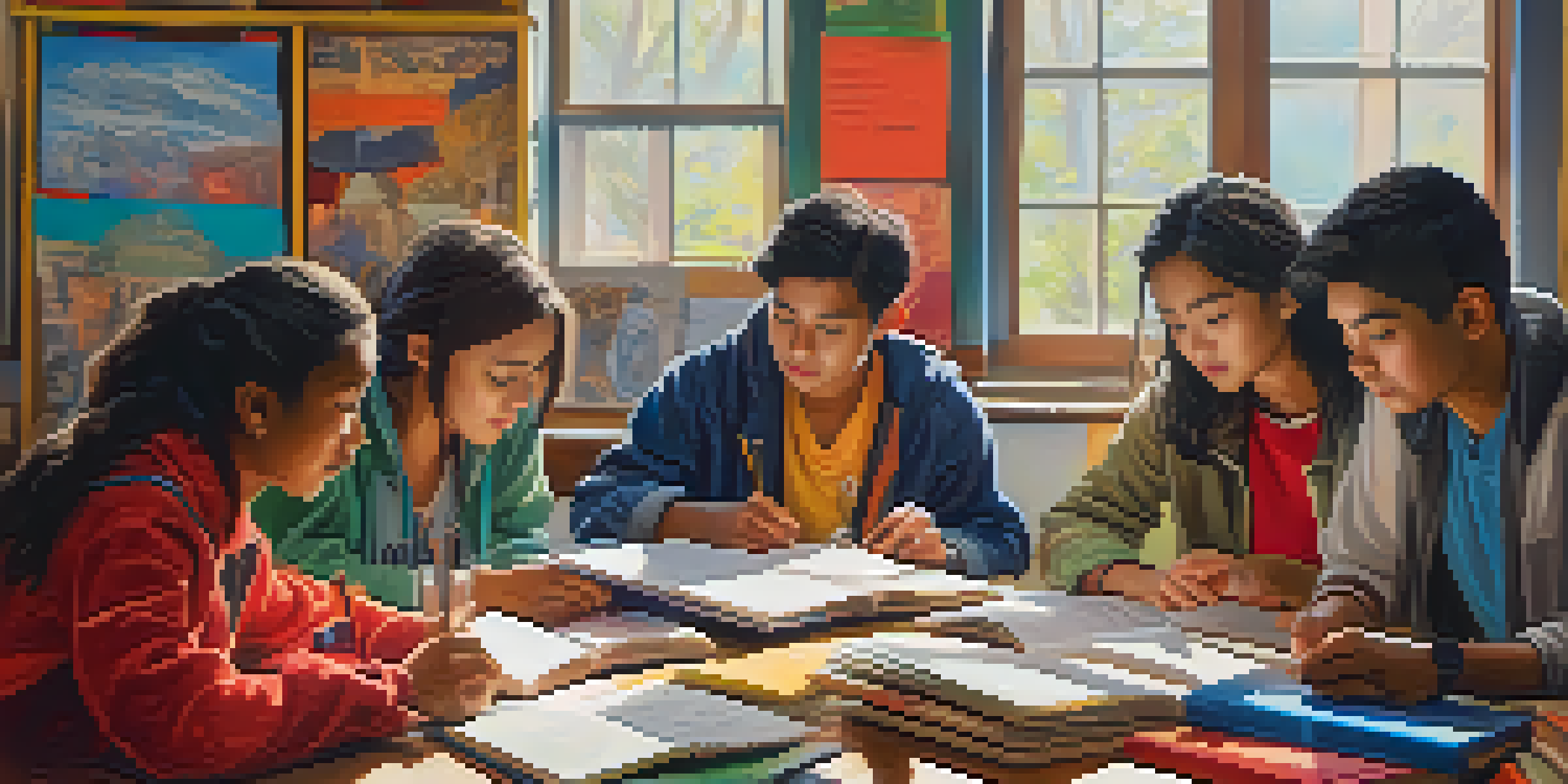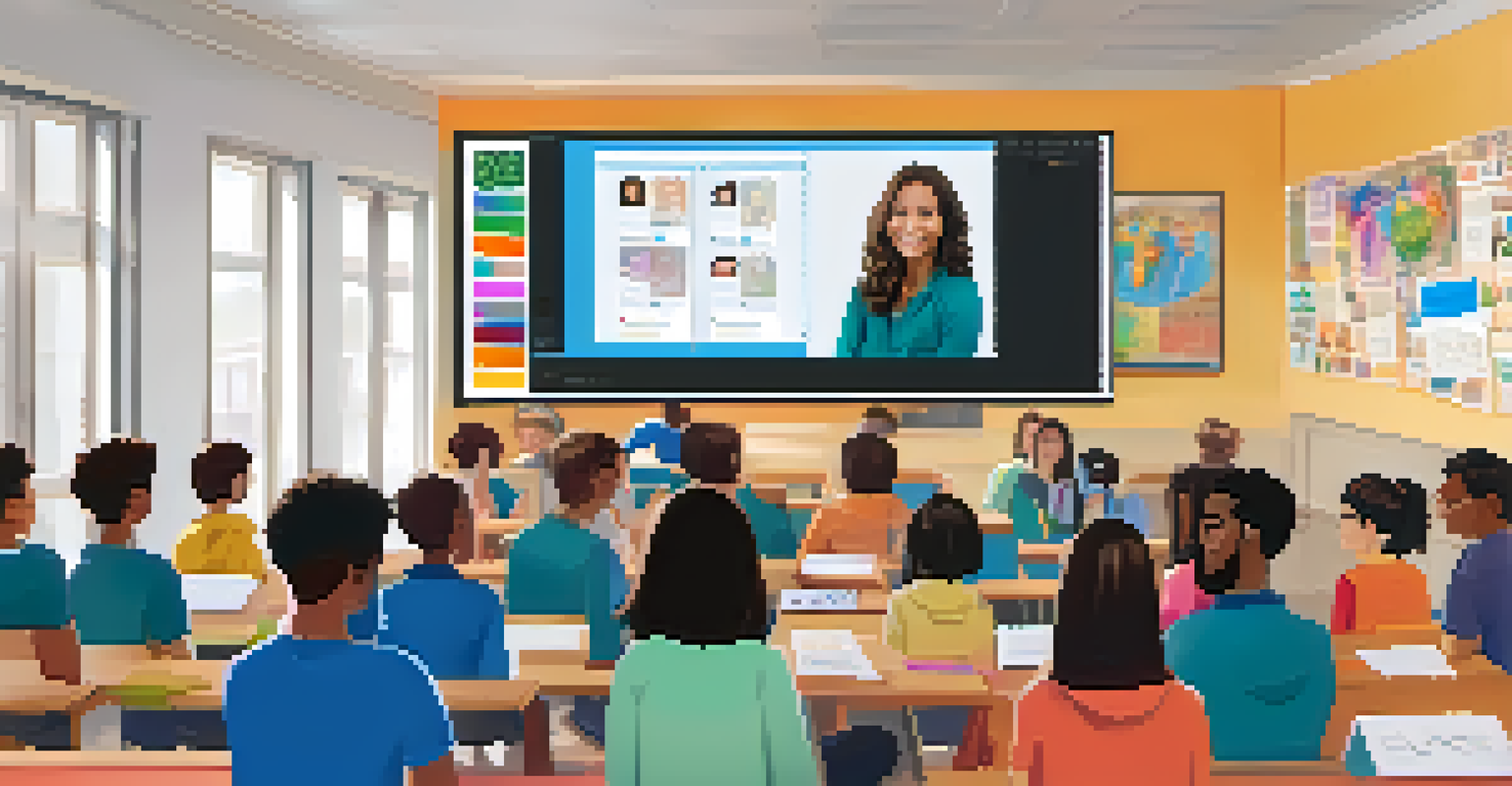The Contribution of Social Media to Global Education Efforts

Social Media: A Catalyst for Global Learning
In recent years, social media has emerged as a powerful tool that connects learners from around the world. Platforms like Facebook, Twitter, and Instagram provide opportunities for students to share knowledge and experiences, breaking geographical barriers. This connection fosters a sense of community among learners, encouraging collaboration and the exchange of ideas.
Education is the most powerful weapon which you can use to change the world.
For example, a student in Kenya can engage in discussions with peers in Canada, allowing for diverse perspectives on various subjects. This kind of interaction not only enriches the learning experience but also promotes cultural understanding. By leveraging social media, education becomes more inclusive and accessible to everyone, regardless of their location.
Moreover, educators are using these platforms to reach out to students and create dynamic learning environments. Through posts, videos, and live discussions, teachers can present information in engaging ways that resonate with learners. This shift towards a more interactive educational model is greatly enhanced by the capabilities of social media.
Building Global Communities of Learners
Social media is instrumental in creating global communities where learners can engage with one another. These communities often revolve around shared interests or subjects, allowing students to pursue their passions collaboratively. For instance, a Facebook group dedicated to environmental science can connect students and professionals who are passionate about sustainability.

Such groups provide a platform for discussions, resource sharing, and collaborative projects. This not only enhances learning but also fosters networking opportunities that can lead to future educational or career prospects. When learners feel part of a community, their motivation and engagement levels significantly increase.
Global Learning Through Connection
Social media connects learners worldwide, fostering collaboration and cultural understanding.
Additionally, these communities can offer support and encouragement, which is especially vital for students facing challenges. By sharing experiences and solutions, learners can help one another overcome obstacles, making education a truly collective effort.
Access to Educational Resources and Content
One of the most notable contributions of social media to global education is the vast array of resources available. Educators and organizations share valuable content, from articles and videos to infographics and podcasts, making it easier for students to access information. Platforms like YouTube and TikTok are especially popular for educational content, offering bite-sized lessons on various topics.
The beautiful thing about learning is that no one can take it away from you.
For example, a student studying mathematics can find countless tutorial videos that explain complex concepts in simple terms. This democratization of information allows learners to explore subjects at their own pace and find resources that suit their learning style. Social media, therefore, acts as a bridge to knowledge that might otherwise be inaccessible.
Moreover, the ability to follow experts and educators on social media keeps students updated on the latest trends and discoveries in their fields. This continuous stream of information encourages lifelong learning, as students are motivated to stay informed and engaged with their interests.
Encouraging Collaborative Learning Experiences
Collaboration is a key component of effective learning, and social media facilitates this in numerous ways. Students can work together on projects, share ideas, and provide feedback in real time, regardless of their physical locations. Platforms like Slack or Discord, often used in educational settings, enable seamless communication and teamwork.
For instance, a group of students from different countries can collaborate on a research project, pooling their diverse perspectives and insights. This not only enriches the final product but also teaches students valuable skills in collaboration and communication. Learning to work with others is crucial in today’s interconnected world.
Access to Diverse Educational Resources
Platforms like YouTube and TikTok provide a wealth of educational content, enabling personalized learning experiences.
Additionally, social media encourages peer-to-peer learning, where students can teach each other. This not only reinforces their own understanding but also fosters a sense of responsibility and leadership among learners.
Amplifying Educational Initiatives and Campaigns
Social media serves as a powerful platform for amplifying educational initiatives and campaigns. Organizations and institutions can share their programs and resources widely, reaching a broader audience than traditional methods. This increased visibility helps raise awareness about critical educational issues, such as access to education and literacy rates.
For instance, campaigns like #BlackLivesMatter have extended their reach to educate the public about systemic racism and its impact on educational equity. By using social media, these movements can mobilize support and drive change at a global level. This demonstrates the potential of social media to not only inform but also inspire action.
Moreover, educational institutions can leverage social media to promote their offerings, engage prospective students, and showcase success stories. Effective use of these platforms can significantly enhance enrollment and participation, making education more accessible to all.
Enhancing Teacher-Student Interaction
Social media has transformed the dynamics between teachers and students, making interaction more casual and frequent. Educators can easily share resources, provide feedback, and answer questions through platforms that students are already comfortable using. This accessibility helps to break down traditional barriers, encouraging open dialogue.
For example, teachers can create private groups on platforms like Facebook or WhatsApp to facilitate discussion and share important updates. This creates a sense of belonging and makes students feel more connected to their educators. The informal nature of these interactions can also lead to increased student participation.
Challenges of Social Media in Education
While beneficial, social media also presents challenges such as misinformation and cyberbullying that require careful navigation.
Furthermore, through social media, teachers can share their own learning journeys, providing relatable examples for students. This humanizes the teaching experience and encourages students to engage more actively in their educational pursuits.
Challenges and Considerations of Social Media in Education
While social media has numerous benefits for global education, it also presents challenges that need to be addressed. Issues such as misinformation, cyberbullying, and privacy concerns can hinder the learning experience. It's crucial for educators and students to navigate these challenges thoughtfully to ensure a safe and productive online environment.
For instance, misinformation can spread rapidly on social media, leading students to trust unreliable sources. To combat this, educators can teach critical thinking skills and media literacy, empowering students to discern credible information. Fostering a culture of responsible social media use is essential for maximizing its educational potential.

Additionally, creating guidelines for respectful interactions can help minimize instances of cyberbullying. Establishing a supportive online atmosphere is vital for all learners to feel safe and valued in their educational journeys.